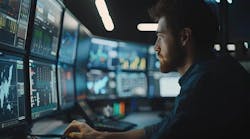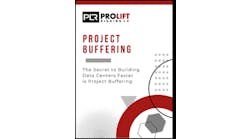Denver Market Offers Nearly Year-Round Free Cooling
We continue our series of stories on the leading geographic markets for data center space. Data Center Frontier is partnering with datacenterHawk to provide in-depth market reports on each city we profile. This time, we visit the Denver Data Center Market, one of the fastest-growing technology ecosystems in the U.S. This final post in our series explores the Denver business environment, as providers begin to build larger data centers in the region.
Download the full report.
Here’s a look at Denver from a site selection and economic development perspective.
Connectivity
As stated earlier in this series, Denver is a fiber-dense market due to its role as a network relay point connecting West Coast population centers to major Midwest and East Coast markets. In addition to the city’s dense metro fiber grid, Denver has long haul lines looping it to Chicago, Minneapolis, Kansas City, Dallas, Phoenix, Salt Lake City, Seattle, Portland, San Francisco, Los Angeles, San Diego, and other large metros. Additionally, the city boasts lines running from Canada to Mexico directly through Denver.
Power
Denver’s primary power provider is Xcel Energy, which offers power to data centers at a range of $.06-.08/kWh. Although the power rate is lower than some larger markets, such as Northern California or New York/New Jersey, some data center users with large deployments find the current rate unattractive compared to markets like Phoenix, Quincy, or Dallas. New legislation is expected in 2019 to reduce power costs for large consumers, potentially creating opportunities for new hyperscale demand. Additionally, Xcel provides incentive programs to data centers build with energy-efficient systems.
Due to the elevation and overall climate, providers in Denver can utilize free cooling almost year-round, offering the ability to operate data centers with less power.
Over half of Colorado’s fuel mix comes from coal, with wind and natural gas taking up another 40 percent. Governor Jared Polis campaigned to run Colorado on 100 percent clean energy by 2040, which could lead to a shift in the state’s fuel mix. It is expected solar and wind will likely become the state’s primary energy source.
Due to the elevation and overall climate, providers in Denver can utilize free cooling almost year-round, offering the ability to operate data centers with less power.
Denver’s eastern plains lie on the far western edge of tornado alley, giving that specific area a higher than average tornado risk. However, no tornadoes above EF2 have come within 40 miles of Denver.
Disaster Risk
Denver is a low-risk metro area in terms of natural disasters. There is a slight risk of earthquake, and sustained precipitation led to recent flooding in Boulder, but the mountainous region is well-protected against hurricanes and tornadoes.
The eastern plains lie on the far western edge of tornado alley, giving that specific area a higher than average tornado risk. However, no tornadoes above EF2 have come within 40 miles of Denver. Seismic activity is not unheard-of in Denver, as well, although most earthquakes in Denver occur in the 3.5 to 4.5 magnitude range. Although the risks are higher in Denver, they are lower than other tornadic prone central markets or West Coast markets with higher earthquake risks.
Economic Development & Incentives
Colorado currently offers no formal data center tax incentives, although some projects have received tax breaks on a case-to-case basis. Although several attempts have been made to introduce a state data center tax break, all bills have been voted down.
The Denver Data Center Market Report also covered the following topics:
Download the full Data Center Frontier “Denver Data Center Market” special report, courtesy of Iron Mountain Data Centers.






